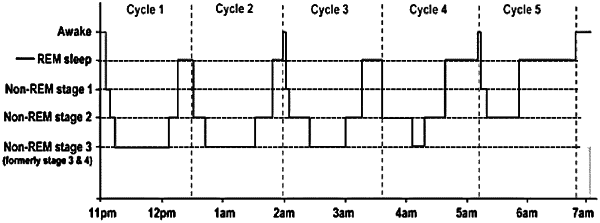| CPC A61B 5/4818 (2013.01) [A61B 5/02405 (2013.01); A61B 5/02416 (2013.01); A61B 5/4812 (2013.01); A61B 5/681 (2013.01); A61B 5/7267 (2013.01)] | 9 Claims |

|
1. A system for detecting sleep apnea, comprising:
a physiological sensor for generating a sensor signal from a user for use in detecting sleep apnea in the user; and
a processor coupled to the physiological sensor, the processor being structured and configured to include:
a sleep stage detection unit including a sleep stage classifier structured and configured to determine a sleep stage of the user based on heart rate variability information derived from the sensor signal;
a plurality of pre-trained apnea classification models, each pre-trained sleep apnea classification model being associated with a particular one of a plurality of predetermined sleep stages and being structured and configured to automatically detect an apnea event based on the heart rate variability information, the plurality of predetermined sleep stages including at least two different non-awake sleep states;
an apnea classification model selection unit structured and configured to select one of the pre-trained apnea classification models based on the determined sleep stage of the user; and
an apnea detection unit structured and configured to determine whether apnea has been detected in the user using the selected one of the pre-trained apnea classification models and the heart rate variability information and to generate an output indicative of whether apnea has been detected.
|